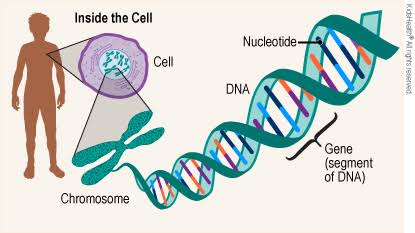
Finding DNA changed our knowledge of the world, and more importantly, life itself. It did not so much alter the world itself. In spite of the fact that DNA was first discovered many years ago in the 19th century, we have only just begun to use the term.
What Is DNA?
DNA, or deoxyribonucleic acid, is a complicated molecule that houses all of the information needed to create and sustain a creature. DNA is found in every living thing’s cells. In actuality, every single cell in a multicellular organism contains all of the DNA needed for that organism.
But DNA is the fundamental component of heredity in all living forms, and it does more than only dictate the composition and activities of living things. Stated differently, throughout the process of reproduction, a certain amount of an organism’s DNA is transferred to the progeny. While permitting minor alterations that add to the diversity of life, this transmission of all or a portion of an organism’s DNA helps maintain a certain degree of continuity from one generation to the next.
DISCOVERY OF DNA
Many people believe that DNA was discovered in the 1950s by scientists Francis Crick and James Watson. Nope, not that quickly. In actuality, Swiss physician Friedrich Miescher made the initial discovery of DNA in 1869.
After completing his medical studies, Miescher relocated to Tübingen to work in biochemist Hoppe-Seyler’s lab with the goal of understanding the components of life. Selecting leucocytes as his material source, he began by examining the proteins within these cells. But in the course of these investigations, he discovered a material with peculiar characteristics that did not like those of proteins.
Miescher had managed to obtain the first DNA purification, albeit rudimentary. He went on to study the characteristics and makeup of this mysterious material and demonstrated how radically different it was from proteins. He called the new material “nuclein” since it was found in the nuclei of the cells; this term is still used in the modern term deoxyribonucleic acid. Prior to Watson and Crick, a number of other researchers had worked on studies involving DNA identification.
What Does the Word “DNA” Mean?
Eventually, the word “nuclein” gave rise to the abbreviation “DNA,” which stands for deoxyribonucleic acid. Albrecht Kossel, a German biochemist who would go on to win the Nobel Prize, is frequently given credit for the name.
The Polynucleotide Model by Levene

Over time, several scientists expanded on Miescher’s discoveries, including Phoebus Levene. Levene had no idea how the nucleotide components of DNA were put together. Accurately speculating that nucleic acids are chains of nucleotides, each containing a base, a sugar, and a phosphate group, he put out the polynucleotide model.
Watson and Crick’s Double-Stranded Helix

Watson and Crick and “their” significant discovery in the science of genetics successfully discovered DNA’s double-stranded helix structure, bound by hydrogen bonds. Watson and Crick received widespread praise and the 1962 Nobel Prize for their discovery.
QUESTION TIME
The paternity fraud revealed by DNA testing will be the topic of our upcoming article. In the meanwhile, based on personal experiences, news, or stories you have heard about how wonderful homes and relationships have fallen apart and how many children’s futures have been destroyed due to the findings of a DNA test, can you conclude that DNA is a blessing or a curse?

– Deeprows
Discover more from
Subscribe to get the latest posts sent to your email.




